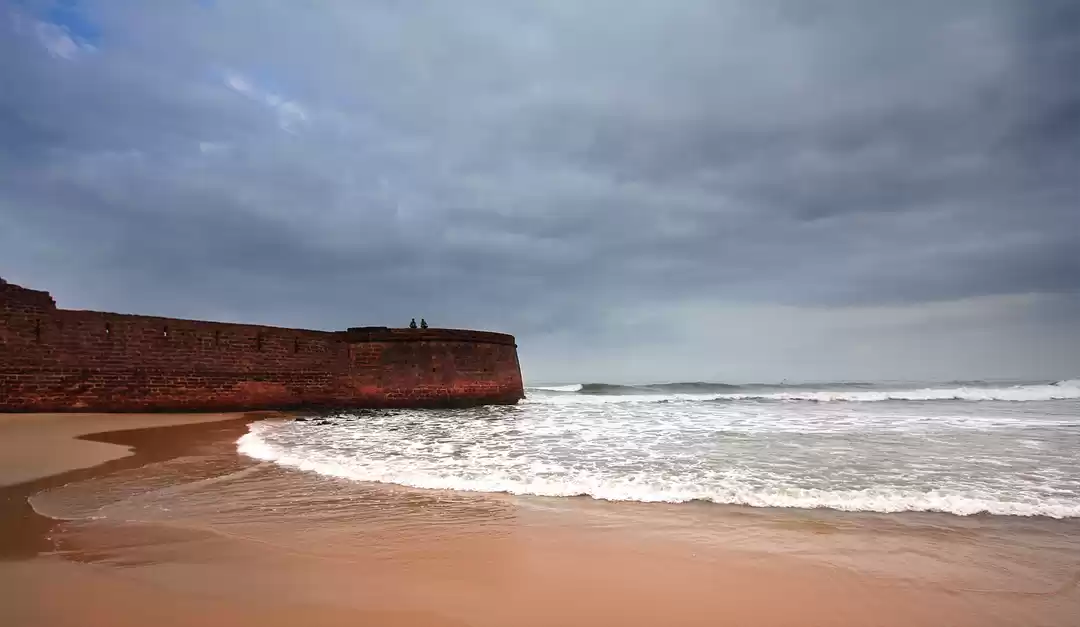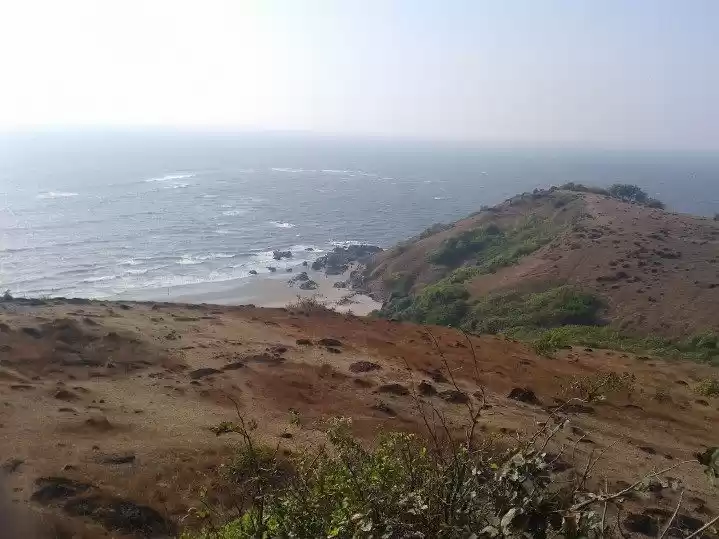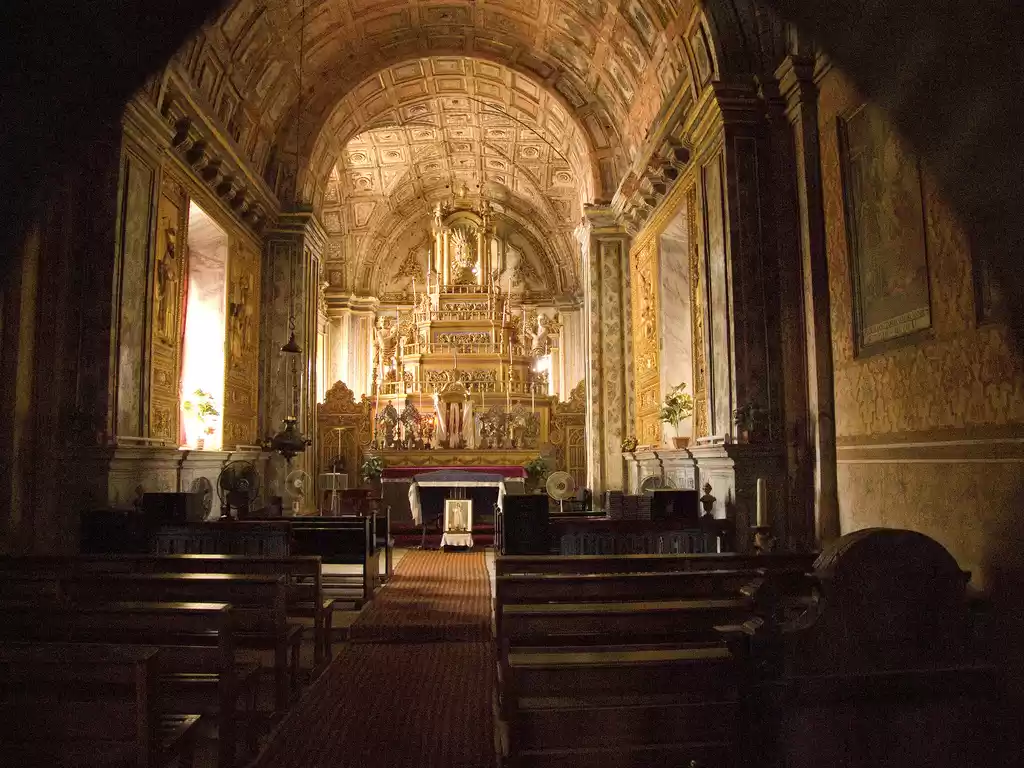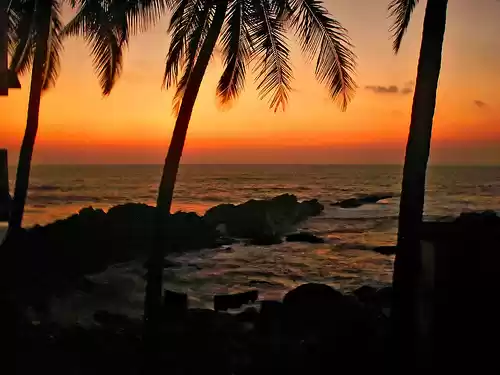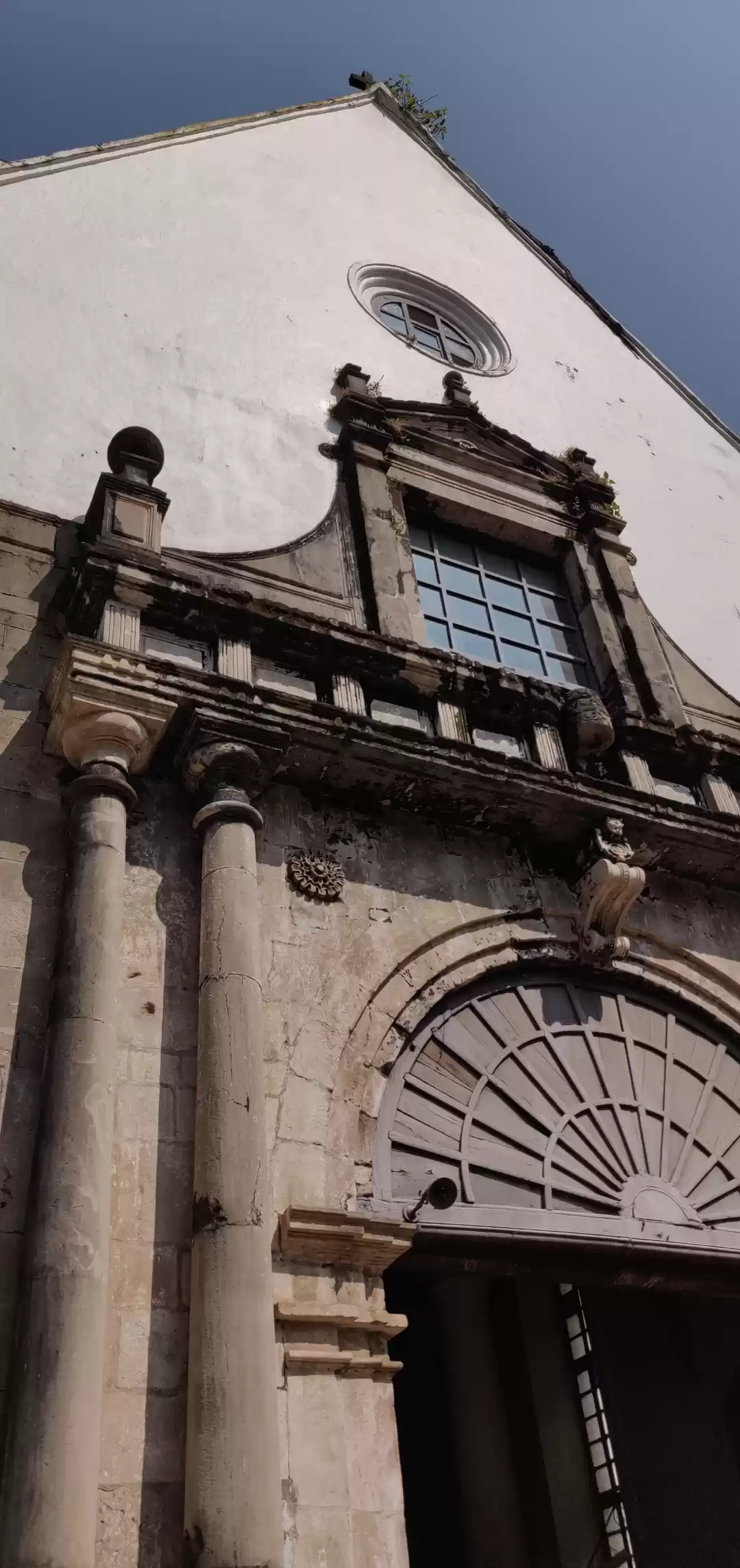The Basilica of Bom Jesus is one of the oldest churches in Goa and is a UNESCO World Heritage Site. It is famous for its Baroque architecture and the tomb of St. Francis Xavier, the patron saint of Goa.
This church in Goa not only serves as a place of worship but also houses the Museum of Christian Art, displaying artifacts dating back to the Portuguese era, providing insights into the cultural and religious life of the time. Visitors admire the exquisite frescoes, woodwork, and paintings, and the main gold leaf alter at Basilica.
History Of Basilica Of Bom Jesus

- The Basilica of Bom Jesus in Goa, India, was built in the late 16th century by the Jesuits, a Catholic religious order known for its missionary work.
- The name "Bom Jesus" means "Good Jesus" or "Infant Jesus," referring to the venerated image of Jesus as a child in the church.
- Constructed in 1594, the church is one of the oldest in Goa and has been designated as a UNESCO World Heritage Site.
- It became a significant center for the Catholic faith in the region, reflecting the Portuguese colonial influence in Goa.
- The Basilica is renowned for housing the tomb of St. Francis Xavier, a Spanish Jesuit missionary who played a crucial role in spreading Christianity in Asia.
- St. Francis Xavier's body, remarkably well-preserved, is enshrined in the Basilica and is a site of pilgrimage for Catholics seeking his intercession.
- The Basilica of Bom Jesus stands as a symbol of Goa's rich religious and cultural heritage, embodying its history of Portuguese colonization and enduring Catholic legacy.
- Every 10 years, his body is displayed to the public in a solemn ceremony called the Exposition. The last Exposition was held in 2014, and the next one is expected in 2024.
Read: UNESCO World Heritage & The Face of Goa
Architecture Of Basilica Of Bom Jesus

Baroque and Portuguese Colonial Architecture: The Basilica is a prime example of Baroque architecture, which is also infused with Portuguese colonial styles, reflecting the historical and cultural amalgamation of the period.
Red-Laterite Stone Façade: The striking façade of the Basilica is constructed from red-laterite stone, which is characteristic of the region and contributes to the building’s grandeur2.
Combination of Architectural Styles: The façade combines elements of Ionic, Doric, Corinthian, and composite styles, showcasing a harmonious blend of classical architectural orders.
Gilded Main Altar: Inside, the main altar is gilded, adding a rich visual contrast to the otherwise simple interior. It stands as a focal point of the church’s design.
Marble Flooring with Precious Stones: The flooring of the Basilica is made of marble, inlaid with precious stones, which adds to the opulence and sacred atmosphere of the space2.
Cruciform Plan: The church is designed in a cruciform plan, a traditional layout for many Christian churches, symbolizing the crucifixion of Jesus Christ.
Tomb of St. Francis Xavier: The south side of the transept houses the ornate tomb of St. Francis Xavier, a gift from Grand Duke Cosimo III of Tuscany, carved by Giovanni Battista Foggini.
Must Notice Elements at Basilica of Bom Jesus Church Goa

- The carved wooden pulpit that has intricate designs of flowers, animals, and angels.
- The mural of St. Christopher that covers an entire wall behind the altar. It depicts St. Christopher carrying the Infant Jesus across a river.
- The statue of St. Francis Xavier that stands next to his tomb. It shows him holding a silver casket with his right hand and blessing the people with his left hand.
- The painting of The Last Judgment that hangs above the main entrance. It shows Jesus judging the souls of the dead, while angels and demons fight for them.
The church also has some symbolic meanings behind some of these elements
- The red color of the facade represents the blood of Christ and the martyrs.
- The letters IHS represent the name of Jesus and the motto of the Jesuits: "Iesus Hominum Salvator" (Jesus, Savior of Mankind).
- The sun with the letters IHS represents the light of Christ and the glory of God.
- The symbols of St. Ignatius Loyola represent his virtues and achievements: the book for his learning, the globe for his missions, the cross for his faith, and the skull for his death.
Timings & Entry Fee Of Basilica Of Bom Jesus

The Basilica of Bom Jesus in Goa offers religious services and has specific timings for masses. The mass timings are as follows:
Monday to Saturday: 7:00 AM - 8:00 AM and 6:00 PM
Sunday: 8:00 AM, 9:15 AM, and 6:00 PM in Konkani, 10:15 AM in English
Sunday: 6:30 AM to 11:00 AM and 5:00 PM to 6:30 PM
Regarding the entry fee, there is no entry fee to enter the church, but donations are welcome
Things To Do Inside Basilica Of Bom Jesus

The Tomb of St. Francis Xavier: The main draw of the Basilica, housing the silver casket containing the remains of the saint.
Main Altar: The main altar dedicated to St. Ignatius of Loyola, founder of the Jesuit order, featuring ornate decorations and religious artwork.
Side Chapels: Explore the various side chapels dedicated to different saints and aspects of Catholic worship, each adorned with religious art and statues.
Art and Artifacts: View the collection of religious art and artifacts displayed throughout the Basilica, showcasing the history and culture of the region.
Must Read: Visit the best of Goa Churches
Places To Visit Near Basilica of Bom Jesus

Se Cathedral - Largest church in Asia - Se Cathedral is a majestic church that was built in 1619 during the victory of the Portuguese over a Muslim army. It has a Tuscan exterior and a Corinthian interior, and boasts of having a golden bell that is one of the largest in India.
Church of St. Francis of Assisi - Church of St. Francis of Assisi was built in 1661 by the Franciscans and has a Baroque facade and a Mannerist interior, and houses a museum of Christian art that displays paintings, sculptures, vestments, and relics related to Goa's colonial past.
Museum of Christian Art - It has a collection of over 200 items that date back to the 16th century, such as ivory statues, silver chalices, wooden altars, and embroidered vestments. The library contains rare books and manuscripts on Christian art and history, as well.
Archaeological Museum - It has a collection of over 8000 items that range from prehistoric to modern times, such as stone tools, coins, inscriptions, sculptures, paintings, and weapons.
St. Augustine Tower - This ruined bell tower was once part of a large church complex that was built in 1602 by the Augustinians. The tower is 46 meters high and has four stories, but only one remains intact.
Dress Code At Basilica of Bom Jesus Goa
The church has a dress code that requires visitors to dress modestly and respectfully. You should avoid wearing shorts, skirts, sleeveless tops, or any clothing that exposes too much skin. You should also remove your shoes before entering the church.
Must Read: Experience The Three Kings Church, Goa
How to Reach Basilica of Bom Jesus

The Basilica of Bom Jesus is located in Old Goa, about 10 km from Panaji, the capital city of Goa. It is accessible by various modes of transport:
By Car: Take NH 748 highway from Panaji and park at the church's nearby parking lot for a nominal fee.
By Bus: From Panaji bus stand, take a bus to Old Goa bus stand (1 km from the church) for around INR 10 per person.
By Train: From Panaji railway station, take a train to Karmali railway station (5 km from the church) for around INR 20 per person.
By Flight: Fly to Goa International Airport from any major city in India (25 km from the church), then take a taxi or bus to reach the church.
Tips For Visiting Basilica Of Bom Jesus

- Respect the sanctity of the place and maintain silence and decorum.
- Do not take photographs or videos inside the church, especially near the tomb of St. Francis Xavier.
- Do not touch the relics of St. Francis Xavier
- Do not litter or damage any property inside or outside the church.




























